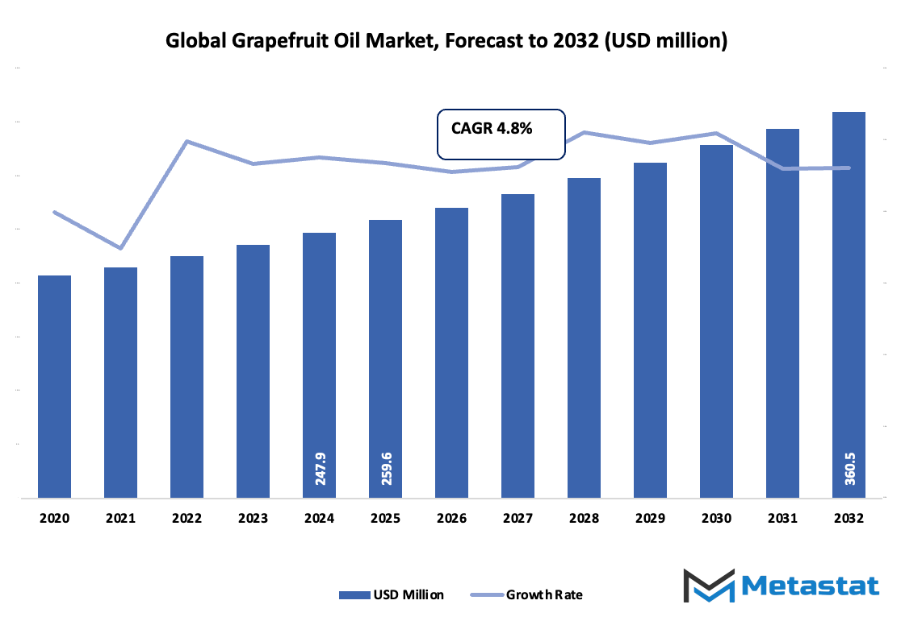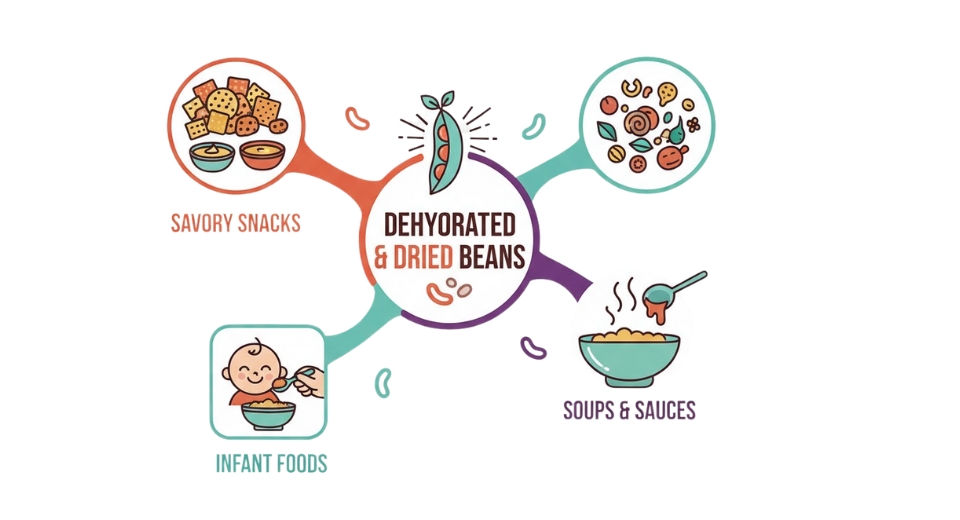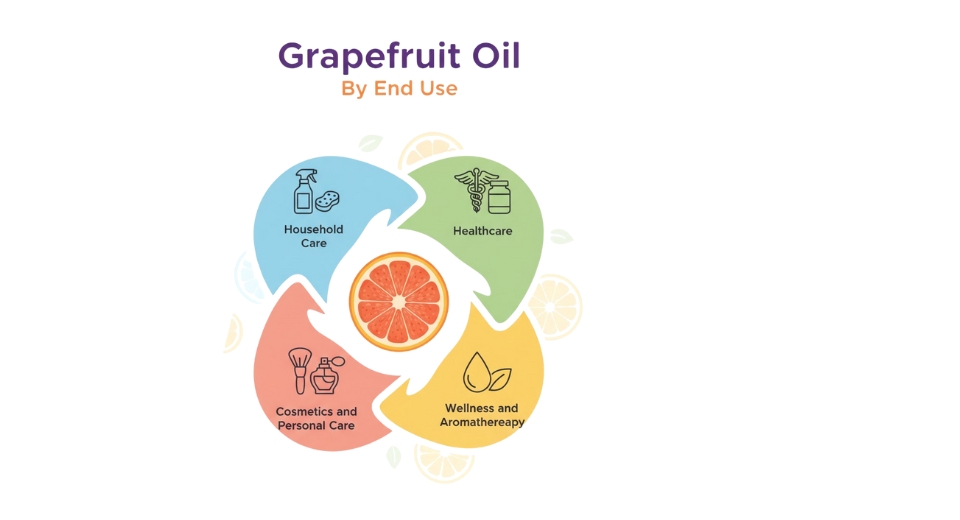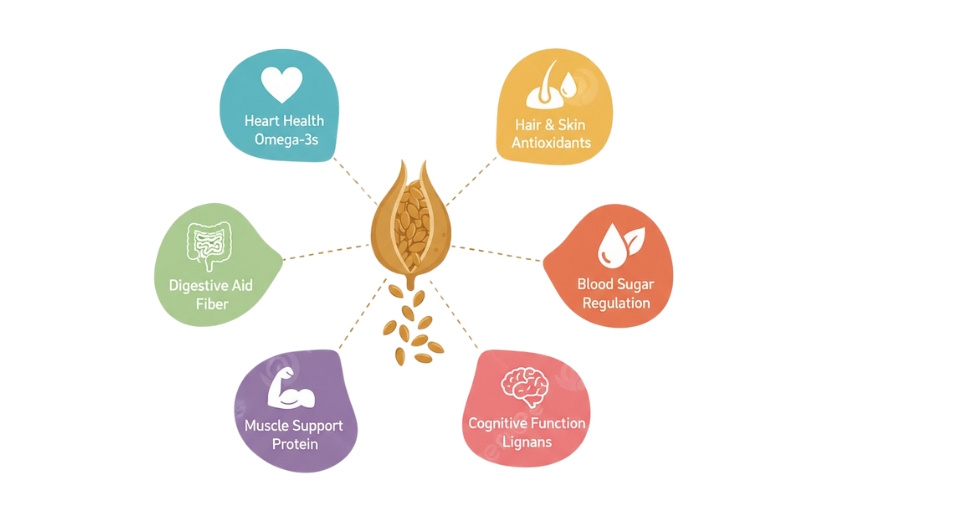Global Grapefruit Oil Market - Comprehensive Data-Driven Market Analysis & Strategic Outlook
The global grapefruit oil market and its industry were already in the making before the modern aromatherapy trends brought it commercial value. Its narrative starts back in the late 18th century when the grapefruit trees were accidentally found in the Caribbean. The sailors and the settlers were then grinding the peel to bring out the sharp and fresh scent. They thought that it might help to elevate the mood in the course of long travels. For years, the oil was a local product used in tiny amounts, mostly by small distillers who squeezed the peel after the fruit went for human consumption. No one took it for granted that a by-product of a breakfast fruit would one day acquire a commercial identity of its own.
- The global grapefruit oil market was about USD 259.6 million in 2025, and it will grow at a CAGR of around 4.8% till 2032, with the possibility of going beyond USD 360.5 million.
- The White Grapefruit is the largest contributor to the market with a share of nearly 37.2% and it is also the main force behind new products and applications through thick research.
- The main trends are: more and more people are turning to nature in their cosmetics and personal care products; aromatherapy and meditation are gaining popularity as wellness practices and thus are increasing the demand.
- The applications in the pharmaceutical and functional food industries are among the opportunities that will come with the expansion of the market.
- The main point is that within the next decade the market will hold a very high value. Hence there is a great potential for growth.

The market was initially acknowledged in the 1900s when grapefruit juice was the drink of choice in North America. Canneries rejected tons of peel, and oil extraction from this waste became the innovative producers' business. By that time, it was already being used by the fragrance and soap industry for its sheer and lively scent. It was this period that really turned around the whole concept of agricultural waste, giving it a new life as an ingredient possessing economic value.
Aromatherapy was one of the main factors that contributed to the next transformation in the late '80s and early '90s. Consumers wanting a more natural and gentle approach to gaining emotional stability would not shy away from grapefruit oil which was one of the top picks from its uplifting smell. Governments were slowly getting involved and starting to set up regulations that would eventually dictate the purity and the methods of distillation. But rather than posing a threat to the producers they were actually pushing them to sharpen their skills in extraction and in tracing the product back to its source.
Today, the demand is determined largely by the consumer preference for clean, unprocessed, and natural personal care products. In the past, manufacturers of high-end cosmetics were using and asking for cold-pressed grapefruit oil, simply because it was the best way by which the fragrance was kept almost intact. The plants are indeed acquiring all the necessary facilities for stainless-steel extraction, digital peel quality monitoring, and better transparency in sourcing. All these changes not only prevent the mixing of different qualities but also make it possible for the growers to have a more or less stable income.
The future of production will probably focus more on the sustainability aspect because buyers are now more conscious about the reduction of agricultural waste. The main raw material is still grapefruit peel, and the manufacturers will do their utmost to utilize the entire fruit. It is possible that companies will collaborate with juice-making factories in order to get the peel of the fruits with the least amount of transport emissions. The increasing trend of natural household and spa products might be an indication that grapefruit oil will continue to be a prominent player in the product design aspect for some time to come.
Market Segments
The global grapefruit oil market is mainly classified based on Type, Application, End use, Distribution Channel.
By Type is further segmented into:
- White Grapefruit: The oil of white grapefruit has a vivid and sharp fragrance which gives a clean effect when mixed with other fragrances. The oil has a reputation for being fresh and having a mild citrus character. The manufacturers are very much concerned with providing a good and gentle quality of the natural product during the process of extraction.
- Pink/Red Grapefruit: The oil of pink or red grapefruit gives a citrus note that is sweeter and slightly warmer than the white one. The color and the scent are due to the natural pigments present in the fruit. The increasing interest from manufacturers of the products is encouraging the reliable supply of this variety and thus the provision of more options for the creation of fragrances and cosmetics.
By Application the market is divided into:
- Aromatherapy: Among the different essential oils used in aromatherapy, grapefruit oil comes out as the most refreshing. It is preferred by many especially for its tangy and fruity scent that can create a comfortable indoor atmosphere. Mixing with other mild oils creates options for fragrances that are neither overpowering nor weak. Following the calm lighting and the steady diffusion, the soothing environment is ready in homes, studios, or small wellness areas.
- Skin Care: Grapefruit oil is also present in skincare forms, which include the creams, mists, and cleansers that refresh the skin. The oil's gentle effect in diluted form gives a fresh feeling on the skin. Product manufacturers are continuously working on different formulations that reduce sensitivity while at the same time providing a smooth texture and a pleasant citrus scent.
- Hair Care: The application of grapefruit oil in hair products is targeted at keeping up a clean and balanced scalp. A very small quantity of the oil gives a fresh smell when added to the shampoos or light conditioners. The products undergo frequent testing to guarantee that the oil is compatible with different hair textures, and that the formulation remains stable during shelf life.
By End use the market is further divided into:
- Healthcare: In some cases, healthcare environments make use of grapefruit oil by including it in room fresheners or gentle topical products regulated by doctors. The room is filled with a pleasant citrus scent that makes it easier for the visitors and staff to tolerate the environment. The strict quality checks and sourcing ensure that the oil is kept at a certain degree of purity and safety throughout the regulated areas.
- Cosmetics and Personal Care: The producers of cosmetics and personal care products use grapefruit oil in the making of scents, light creams, body mists, and scrubs. For instance, a vibrant citrus scent is the main contribution of the oil to the product's Nice and Clean features. Taking great care in blending one ensures that the formula is stable and the aroma balanced, thus creating a bright sensory experience for the user during daily routines.
- Supermarkets/Hypermarkets: The products that contain grapefruit oil in large stores are strategically placed in such a way that they are easily accessible, thus allowing the customers to quickly compare the products by their size, scent, and price. The shelf placement helps to attract those shoppers who are looking for new citrus-based items to buy on the spot. The clear labels make it easy to choose and the frequent promotions are a way to increase the overall visibility of the product.
By Distribution Channel the global grapefruit oil market is divided as:
- Convenience Stores: Convenience stores provide small bottles or travel-sized options for quick purchase. Limited shelf space leads to fewer varieties, yet the location near checkout areas encourages fast decisions. Shoppers can grab a citrus-scented item during regular errands without planning a long store visit.
- Specialty Stores: Specialty stores offer curated selections, allowing shoppers to explore different citrus notes or blends. Staff members often guide users toward matching scent strengths with personal preferences. These focused stores highlight quality, source details, and small-batch products to support confident purchases.
- Pharmaceuticals: Pharmaceutical outlets stock grapefruit oil products that meet specific safety and labeling guidelines. Controlled handling supports consistent product quality. Clear packaging helps customers understand usage conditions and dilution needs, fostering responsible product selection.
- Online Retail: Online platforms provide wide access to grapefruit oil variations, bottle sizes, and bundled kits. Detailed reviews and product images guide decisions from home. Flexible delivery options encourage repeat orders, helping maintain steady demand across many regions without the need for in-store browsing.
|
Forecast Period |
2025-2032 |
|
Market Size in 2025 |
$259.6 Million |
|
Market Size by 2032 |
$360.5 Million |
|
Growth Rate from 2025 to 2032 |
4.8% |
|
Base Year |
2024 |
|
Regions Covered |
North America, Europe, Asia-Pacific, South America, Middle East & Africa |
By Region:
- Based on geography, the global grapefruit oil market is divided into North America, Europe, Asia-Pacific, South America, and the Middle East & Africa.
- North America is further divided into the U.S., Canada, and Mexico, whereas Europe consists of the UK, Germany, France, Italy, and the Rest of Europe.
- Asia-Pacific is segmented into India, China, Japan, South Korea, and the Rest of Asia-Pacific.
- The South America region includes Brazil, Argentina, and the Rest of South America, while the Middle East & Africa is categorized into GCC Countries, Egypt, South Africa, and the Rest of the Middle East & Africa.

Growth Drivers
Rising demand for natural ingredients in cosmetics and personal care products:
Growing preference for gentle and nature-based ingredients encourages manufacturers to use grapefruit oil in creams, cleansers, and perfumes. Brands seek ingredients that support a cleaner label and reduce synthetic additives. This steady interest improves production and trade activity within the global grapefruit oil market, supporting steady commercial progress.
Increasing adoption of aromatherapy and wellness practices:
Aromatherapy centers, spas, and wellness studios value grapefruit oil for an uplifting and refreshing aroma. Massage blends and diffuser products frequently include citrus extracts to support relaxation and a pleasant surrounding atmosphere. More wellness habits in homes and commercial spaces encourage consistent purchasing from distributors and producers.
Challenges and Opportunities
Limited availability of raw materials due to seasonal fruit production:
Grapefruit harvest depends on climate patterns and agricultural planning. Oil production output can drop when fruit supply falls, affecting extraction volume for manufacturers. Seasonal farming schedules create uncertain sourcing for processors, which may lead to higher prices and supply gaps for companies relying on steady ingredient flow.
Potential skin sensitivity and phototoxicity issues limiting use in formulations:
Formulators must follow safety guidelines when adding citrus ingredients to creams or perfumes. Exposure to direct sunlight after applying certain citrus oils can cause irritation. Safety concerns lead to reduced usage levels in products, pushing manufacturers to test blends carefully and follow regulatory recommendations for responsible consumer use.
Opportunities
Expanding applications in pharmaceuticals and functional food industries:
Researchers explore grapefruit oil for possible benefits linked to freshness, flavour enhancement, and supportive wellness functions. Pharmacies and food manufacturers study controlled usage in capsules, flavor concentrates, and dietary blends. Growing interest from these sectors encourages steady demand growth and may open new business channels for producers and distributors.
Competitive Landscape & Strategic Insights
The global grapefruit oil market continues to grow as demand for natural and plant-based ingredients increases. Consumer interest in clean fragrance and wellness products encourages more sustainable farming and careful harvesting of fruit used for oil extraction. Producers focus on gentle processing methods that support consistent aroma and quality. Sustainable cultivation, fair sourcing practices, and product traceability create confidence among wholesale buyers and end users. Many industries, such as personal care, aromatherapy, and household products, show expanding interest in natural citrus extracts.
The competitive environment includes long-established leaders and fast-growing regional suppliers. Key competitors include India Essential Oils, VedaOils, PRZ, Riya Agro Products, Dève Herbes, Florihana Distillerie, Aromaaz International Natural Essential Oils, Alabama Essential Oil Company, BrownBoi, Mystic Moments UK, NOW Health Group, Inc., Kazima Perfumers, Naissance Trading, Rocky Mountain Oils LLC, Moksha Lifestyle Products, AVI Naturals, and Ancient Healing Oils. Every company seeks unique advantages through innovation, quality improvement, and flexible distribution. Collaborative relationships with farmers support access to premium raw material and strengthen long-term supply networks.
Market expansion depends on dependable supply chains and strong customer trust. Reliable certification, clear labeling, and steady product quality influence purchasing decisions across retail and bulk channels. Producers monitor global demand in order to adjust processing capacity and maintain balanced inventory levels. Seasonal harvest cycles require careful planning to avoid shortages or excess stock. Growing export opportunities create new revenue streams for companies located in regions with abundant citrus agriculture.
Market size is forecast to rise from USD 259.6 million in 2025 to over USD 360.5 million by 2032. Grapefruit Oil will maintain dominance but face growing competition from emerging formats.
Future outlook for grapefruit oil remains positive. Steady consumer preference for natural fragrance and wellness solutions encourages ongoing investment in research, farming partnerships, and production technology. Every improvement in quality, sustainability, and transparency supports stronger global presence and long-term market growth. Continued collaboration among manufacturers and growers will support wider availability and consistent standards worldwide.
Report Coverage
This research report categorizes the global grapefruit oil market based on various segments and regions, forecasts revenue growth, and analyzes trends in each submarket. The report analyses the key growth drivers, opportunities, and challenges influencing the global grapefruit oil market. Recent market developments and competitive strategies such as expansion, type launch, development, partnership, merger, and acquisition have been included to draw the competitive landscape in the market. The report strategically identifies and profiles the key market players and analyses their core competencies in each sub-segment of the global grapefruit oil market.
Grapefruit Oil Market Key Segments:
By Type
- White Grapefruit
- Pink/Red Grapefruit
By Application
- Aromatherapy
- Skin Care
- Hair Care
By End use
- Household Care
- Healthcare
- Cosmetics and Personal Care
By Distribution Channel
- Supermarkets/Hypermarkets
- Convenience Stores
- Specialty Stores
- Pharmaceuticals
- Online Retail
Key Global Grapefruit Oil Industry Players
- India Essential Oils
- VedaOils
- PRZ
- Riya Agro Products
- Dève Herbes
- Florihana Distillerie
- Aromaaz International Natural Essential Oils
- Alabama Essential Oil Company
- BrownBoi
- Mystic Moments UK
- NOW Health Group, Inc.
- Kazima Perfumers
- Naissance Trading
- Rocky Mountain Oils LLC
- Moksha Lifestyle Products
- AVI Naturals
- Ancient Healing Oils
WHAT REPORT PROVIDES
- Full in-depth analysis of the parent Industry
- Important changes in market and its dynamics
- Segmentation details of the market
- Former, on-going, and projected market analysis in terms of volume and value
- Assessment of niche industry developments
- Market share analysis
- Key strategies of major players
- Emerging segments and regional growth potential








 US: +1 3023308252
US: +1 3023308252






